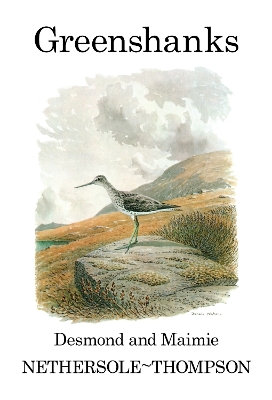Poyser Monographs
3 total works
"From mid-January to mid-April 1935 I was off on my dilapidated bicycle, but how different Speyside was from Breckland. In late February many crossbills were still in flocks; I had to walk and cycle for many miles before finding my first nest in the last week of March, when I located a small breeding group in a plantation of old pines close to a keeper's cottage. Thenceforward, until 1942, I followed the crossbills and slowly began to understand a little about them. At first everything was gloriously new. I watched my crossbills mating and discovered how subtly a winter flock changed to a mating party and from a mating party to mated groups. I studied patterns of territory and dispersion and watched how hens built their nests. I sat under trees and I climbed to nests. I watched hens brooding and saw cocks feeding them. One hen pitched on my fingers and allowed me to catch her. I still vividly recall the sharp resiny scent of her body. I saw pairs rear their young and followed them and their broods through the forest. Soon my notebooks were full, but this was only the beginning."
That extract from the book's first chapter describes how the author began his study of the Scottish pine-feeding crossbills, having noticed earlier that the calls of crossbills in Rothiemurchus Forest were different from those of the spruce-feeding common crossbills he had known in the English Breckland. From this study and a quest for the true identity of the Speyside crossbills has emerged that all too rare book, a work of scholarship and research that is wholly readable, in which the author's delight in his study subject becomes the reader's, too.
That extract from the book's first chapter describes how the author began his study of the Scottish pine-feeding crossbills, having noticed earlier that the calls of crossbills in Rothiemurchus Forest were different from those of the spruce-feeding common crossbills he had known in the English Breckland. From this study and a quest for the true identity of the Speyside crossbills has emerged that all too rare book, a work of scholarship and research that is wholly readable, in which the author's delight in his study subject becomes the reader's, too.
Desmond Nethersole-Thompson has been studying his favourite bird, the greenshank Tringa nebularia, since May 1932. This book, published in 1976, owes much to the interest, almost an obsession, of the Nethersole-Thompson family. The two girls and four boys, as well as both parents, now work as a team in the wild and beautiful north-west Highlands of Scotland. Greenshanks has drawn heavily on the team's field notebooks. In the gneiss country of Sutherland, so different from the forest bogs of Spey Valley, Fennoscandia and the Soviet Union, they have particularly concentrated on the greenshank's displays and breeding, food and feeding behaviour and its remarkable voice. There can be few long-term projects on waders to equal this made by the Nethersole-Thompsons, and there are valuable specialist contributions by other eminent ornithologists. Greenshanks is a major contribution to bird studies and takes its place beside Desmond Nethersole-Thompson's four earlier monographs. The illustrations in colour and monochrome by Donald Watson have all the veracity and atmosphere that one has come to expect of this gifted artist.
Waders: Their Breeding, Haunts and Watchers
by Desmond Nethersole-Thompson and Maimie Nethersole-Thompson
Published 1 January 2010
All of the Nethersole-Thompson family contribute in some measure to this book but it is Dr Desmond Nethersole-Thompson's life-long interest in waders which gives the work its exceptional quality and authority. For well over fifty years the study of waders and their behaviour has been his passion, and his great knowledge and experience are internationally recognised. There is a bonus, too, for the reader in the particular freshness and style of his writing which conveys not only his closely observed, patient study but also the joy and satisfaction he has known in watching such intriguing and beautiful birds, mainly in their Scottish habitats. The core of the book is the comprehensive accounts of the biology and behaviour of 18 species of waders in their breeding haunts (see Contents list). In addition there are chapters on waders generally, wader spacing and dispersion, the wader watchers of past and recent times, and two final chapters on new or returning waders and those pipe-dream species that, not too fancifully, may yet breed one day in these islands.
Voice is one of the headings within the species accounts but there is also an appendix of sonagrams of wader songs and calls; there are tables of data and an extensive, selected bibliography. Donald Watson has provided more than a hundred drawings to complement and embellish the text and there are 32 photographs. Jacket paintings by Donald Watson
Voice is one of the headings within the species accounts but there is also an appendix of sonagrams of wader songs and calls; there are tables of data and an extensive, selected bibliography. Donald Watson has provided more than a hundred drawings to complement and embellish the text and there are 32 photographs. Jacket paintings by Donald Watson

